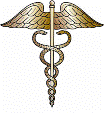
United States Public Health Resources
Date of this Version
8-16-2006
Citation
BMC Family Practice 2006, 7:51, pp.1-7. doi:10.1186/1471-2296-7-51
Abstract
Background: Little is known about the impact of the recent varicella vaccine shortage. To assess the temporal trend in varicella vaccine administration before 18 and 24 months of age in a community cohort of children prior to, during and after the recent varicella vaccine shortage. And to compare the temporal trends in varicella vaccinations to trends of an older, more widely accepted vaccine, the MMR.
Methods: Community population-based birth cohorts were identified who were eligible for the varicella vaccination before, during and after the 2001 to 2002 varicella vaccine shortage. Only children (84% of all) who remained in the community through their second birthday were included. For each child in the cohort, the medical records and immunization registry records from both medical facilities in the county were reviewed to identify the dates and sites for all varicella immunizations given. In addition to varicella immunizations, the dates of all MMR vaccinations were recorded. Additional data abstracted included the child's birth date, gender and dates of any recognized cases of chickenpox up through age 24 months.
Results: Of the 2,512 children in the birth cohorts, 50.8% were boys. In the three cohorts combined, 81.1% of the boys and 79.3% of the girls (p = 0.30) received the varicella vaccine by age 24 months. The pre-shortage community rate of varicella immunization was 79.7% by 24 months of age. During the varicella vaccine shortage, the rate of varicella immunization by 24 months fell to 77.2%. Only 6 additional children received a "catch-up" immunization by 36 months of age. In the post shortage period the community 24-month immunization rate rebounded to a level higher than the pre-shortage rate 84.0%. During the almost three years of observation, the MMR immunization rate by age 24 months was constant (87%).
Conclusion: The varicella shortage was associated with an immediate drop in the 24-month varicella immunizations rate but rebounded quickly to above pre-shortage rates. In this community the only long term impact of the varicella vaccine shortage may be on the small number of children who still had not received catch-up varicella immunizations by 36 months of age.


Comments
U.S. government work.